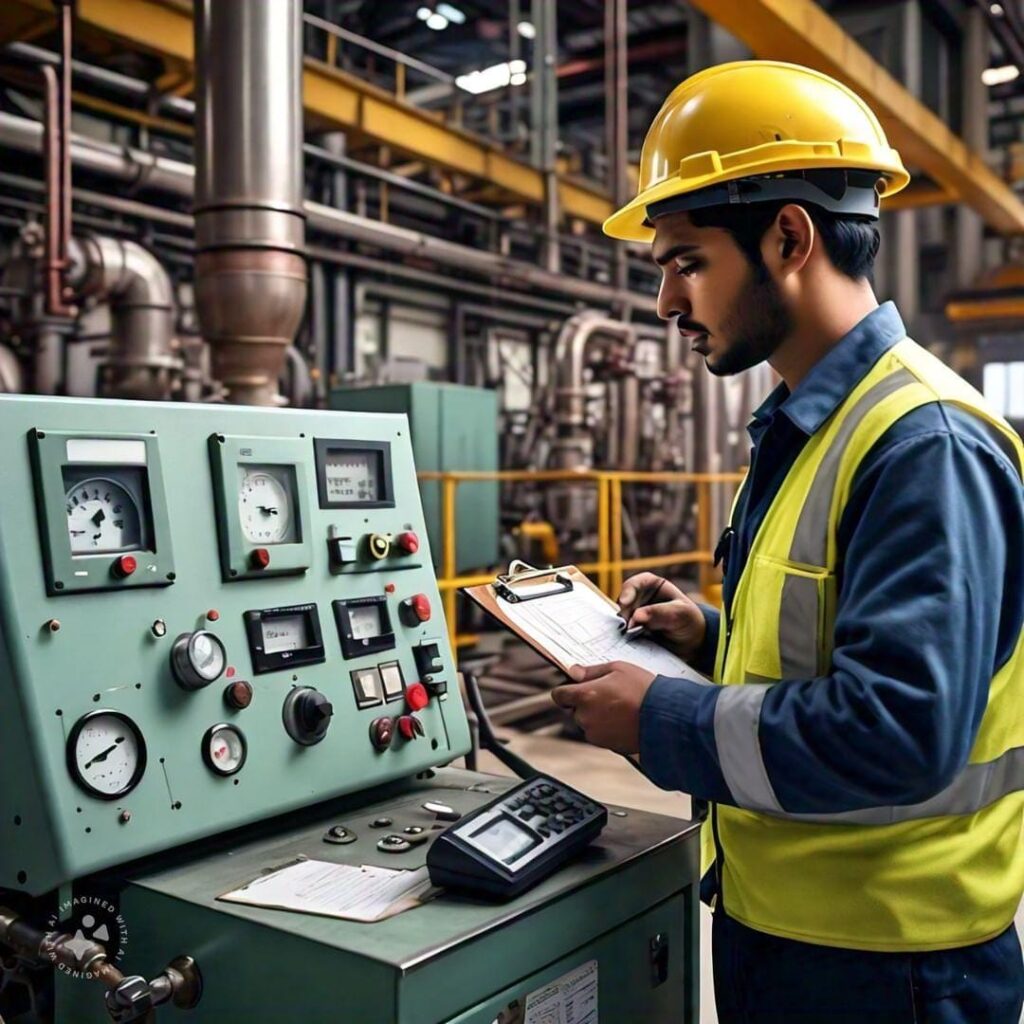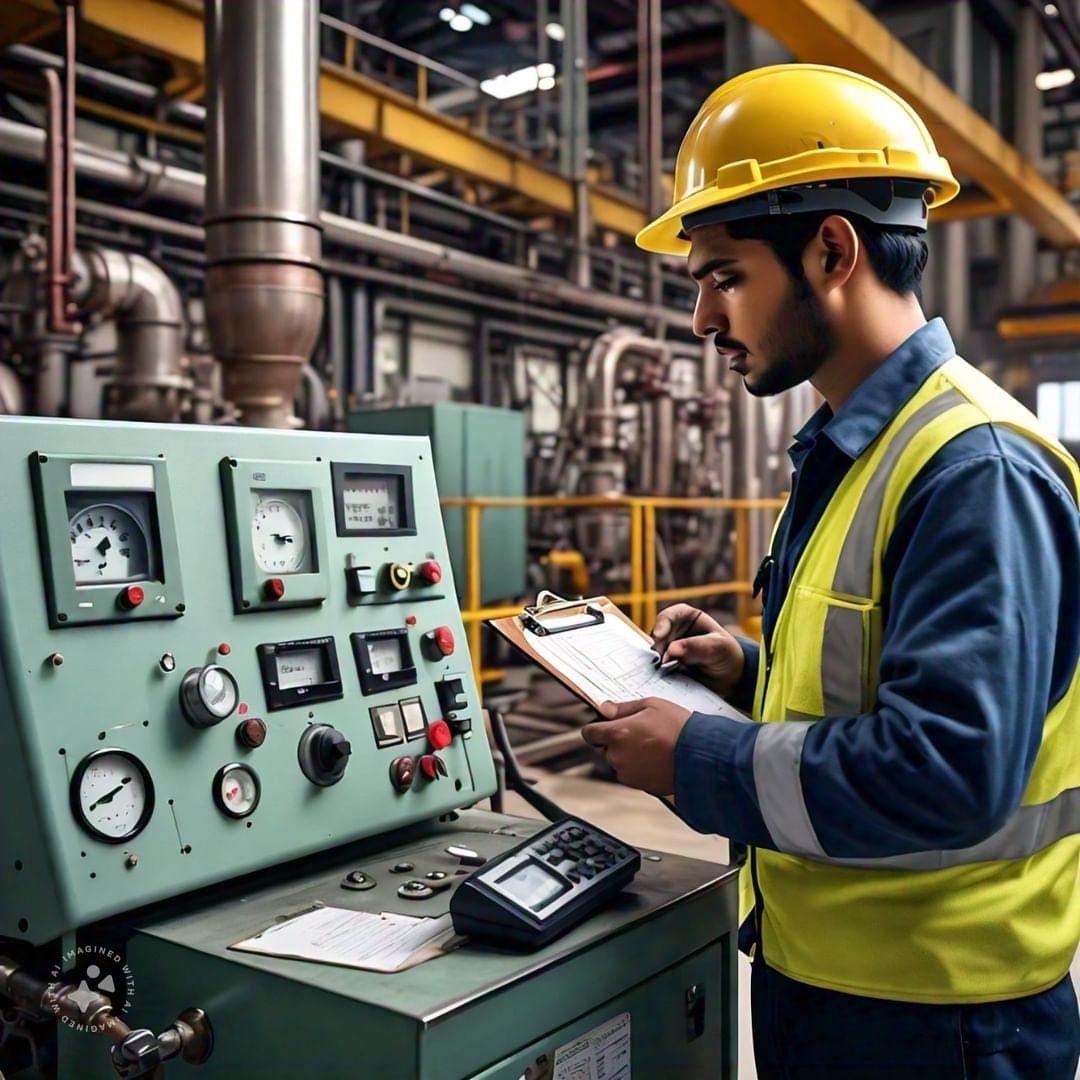The oil and gas industry is a cornerstone of the United Arab Emirates economy, contributing significantly to its GDP and playing a crucial role in the global energy market. Given the high stakes involved, ensuring the accuracy and reliability of instruments used in this sector is paramount. One key aspect of maintaining this reliability is regular device calibration. Calibration is the process of adjusting and verifying the accuracy of measuring instruments, which is essential for ensuring the safety, efficiency, and profitability of oil and gas operations.
The Role of Calibration in the Oil and Gas Industry
In the oil and gas industry, precise measurements are critical for various processes, including exploration, extraction, production, and distribution. Instruments such as flow meters, pressure gauges, temperature sensors, and gas detectors must provide accurate readings to avoid costly errors and ensure operational safety. Calibration ensures that these
instruments perform within their specified tolerances and deliver reliable data.
1.Ensuring Safety
Safety is a top priority in the oil and gas industry, where the potential for hazardous incidents is high. Accurate measurements are crucial for monitoring and controlling processes to prevent accidents. For example, improperly calibrated pressure gauges can lead to incorrect pressure readings, potentially causing pipeline ruptures or explosions. Regular calibration helps detect and correct deviations, reducing the risk of safety incidents.
2.Enhancing Operational Efficiency
Efficiency is vital for the competitiveness of oil and gas operations. Precise measurements ensure optimal performance of equipment and processes, minimizing downtime and maximizing productivity. For instance, calibrated flow meters provide accurate data on the flow rates of oil and gas, enabling better control of production processes and reducing wastage. This not only improves efficiency but also lowers operational costs.
3.Compliance with Regulations
The UAE’s oil and gas industry is subject to stringent regulations and standards to ensure environmental protection and operational safety. Regulatory bodies require companies to maintain accurate records of their processes, which depend on calibrated instruments. Regular calibration ensures compliance with these regulations, helping companies avoid legal penalties and maintain their reputation.
4.Cost Savings
Although calibration involves an upfront investment, it can lead to significant cost savings in the long run. Accurate instruments reduce the likelihood of process disruptions and equipment failures, which can be expensive to rectify. Moreover, precise measurements help optimize resource usage, such as fuel and chemicals, leading to cost savings and improved profitability.

The Calibration Process
The calibration process involves several steps to ensure that instruments provide accurate and reliable measurements. Understanding this process helps us appreciate its importance in the oil and gas industry.
1.Initial Inspection
Before calibration, instruments undergo an initial inspection to identify any visible defects or damages that might affect their performance. This step is crucial for ensuring that the calibration process starts with equipment in good condition.
2.Reference Standards
Calibration requires reference standards that are traceable to international standards. These reference standards provide known values against which the instrument’s measurements are compared. Traceability ensures that calibration results are consistent and reliable across different locations and times.
3.Adjustment and Verification
During calibration, the instrument is adjusted to match the reference standard as closely as possible. After adjustment, the instrument is tested at various points within its operating range to verify its accuracy. This verification ensures that the instrument performs reliably across its entire range of operations.
4.Documentation
Detailed documentation of the calibration process is essential for maintaining records and demonstrating compliance with regulatory requirements. Calibration certificates, which include information about the instrument, reference standards, and calibration results, are issued to provide a traceable record of the calibration.
Challenges in Calibration
Despite its importance, calibration in the oil and gas industry faces several challenges that must be addressed to ensure its effectiveness.
1.Harsh Operating Environments
Oil and gas operations often occur in harsh environments, such as offshore platforms or desert locations, where extreme temperatures, humidity, and corrosive substances can affect the performance of instruments. Ensuring accurate calibration under these conditions requires specialized equipment and expertise.
2.High Volume of Instruments
Large-scale oil and gas facilities use many measuring instruments, making it challenging to manage and schedule regular calibrations. Implementing an efficient calibration management system is crucial for keeping track of calibration schedules and ensuring that all instruments are calibrated on time.
3.Technical Expertise
Calibration requires skilled technicians with specialized knowledge of the instruments and calibration techniques. Ensuring that calibration staff are adequately trained and certified is essential for maintaining the accuracy and reliability of instruments.
4.Cost and Resource Constraints
While calibration offers long-term benefits, it involves initial costs and resource allocation. Balancing the need for regular calibration with budget constraints can be challenging for some companies. However, the cost of not calibrating instruments can be far higher due to potential safety incidents, regulatory fines, and operational inefficiencies.

Best Practices for Effective Calibration
To overcome these challenges and ensure effective calibration, the oil and gas industry can adopt several best practices
1.Regular Calibration Schedules
Establishing regular calibration schedules based on the criticality and usage of instruments helps ensure that all equipment is calibrated on time. Automated calibration management systems can assist in tracking schedules and sending reminders for upcoming calibrations.
2.Environmental Considerations
Taking into account the operating environment of instruments when planning calibration helps address the impact of harsh conditions on their performance. Using protective measures, such as enclosures or specialized coatings, can help maintain instrument accuracy in challenging environments.
3.Qualified Technicians
Ensuring that calibration is performed by qualified technicians with the necessary expertise and certifications is essential for achieving accurate results. Regular training and certification programs help maintain the competency of calibration staff.
4.Use of Advanced Technologies
Adopting advanced calibration technologies, such as automated calibration systems and remote calibration, can improve accuracy and efficiency. These technologies reduce the potential for human error and streamline the calibration process.
5.Continuous Improvement
Regularly reviewing and improving calibration processes helps address emerging challenges and enhance the effectiveness of calibration programs. Implementing feedback mechanisms and conducting audits can identify areas for improvement and ensure that calibration practices evolve with industry needs
Conclusion
Regular device calibration is a critical aspect of maintaining the safety, efficiency, and compliance of the UAE’s oil and gas industry. By ensuring accurate and reliable measurements, calibration helps prevent safety incidents, optimize operations, and comply with regulatory requirements. Despite the challenges involved, adopting best practices and leveraging advanced technologies can enhance the effectiveness of calibration programs. Ultimately, regular calibration is an investment that yields significant long-term benefits, contributing to the overall success and sustainability of the oil and gas sector in the UAE.





Thanks for sharing this informative blog,
Visit us-https://farelabs.com/services/calibration-laboratory/
Calibration |
Calibration Laboratory |
Calibration Lab |
Calibration lab near me |
Calibration Lab in gurgaon |
Calibration Lab in india |
Calibration Services |
Instrument Calibration Laboratory |
Calibration Testing Lab